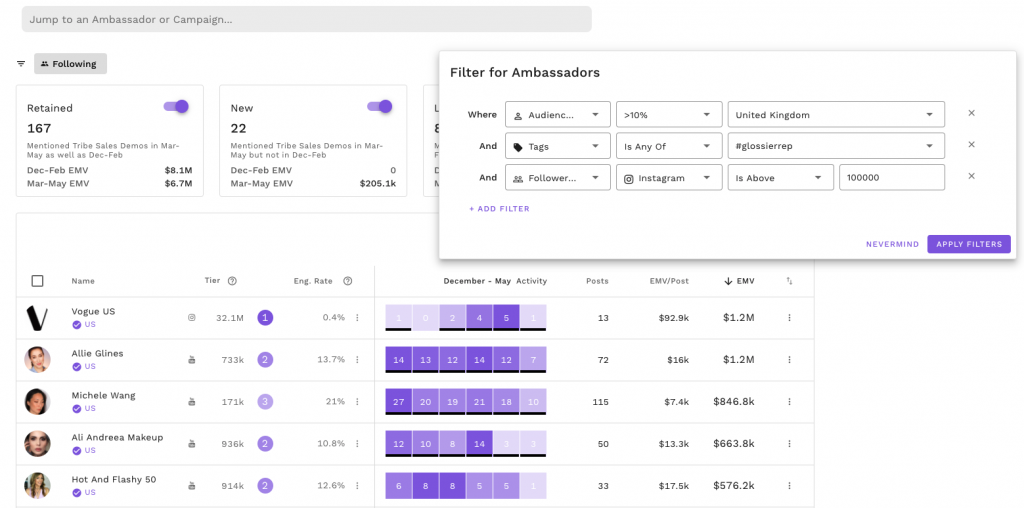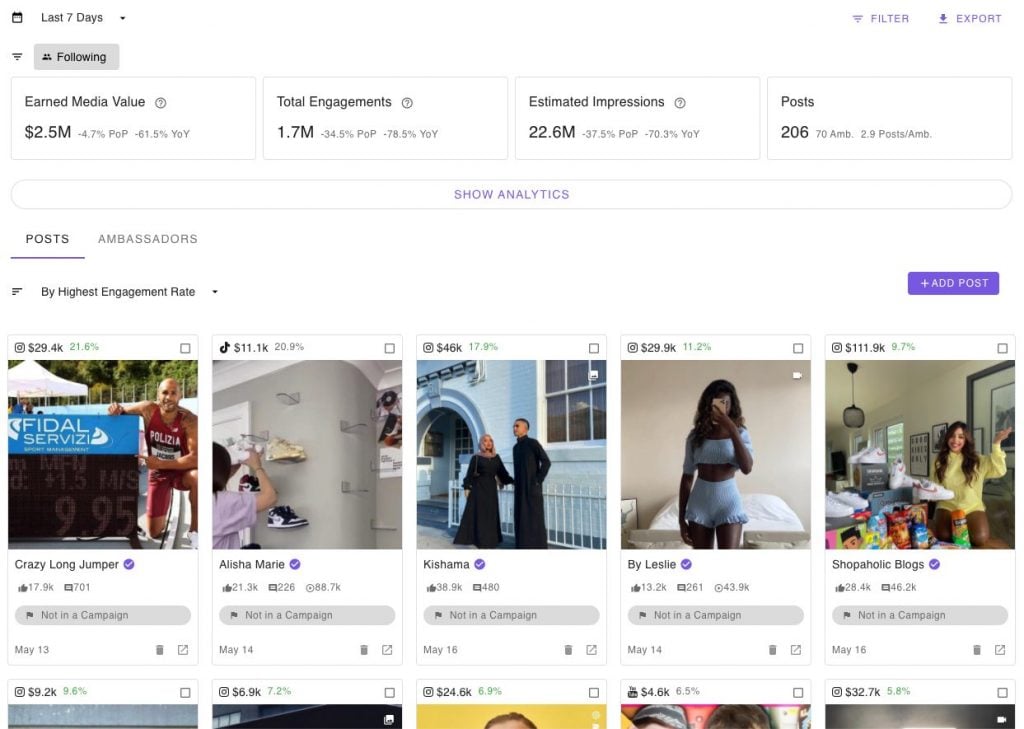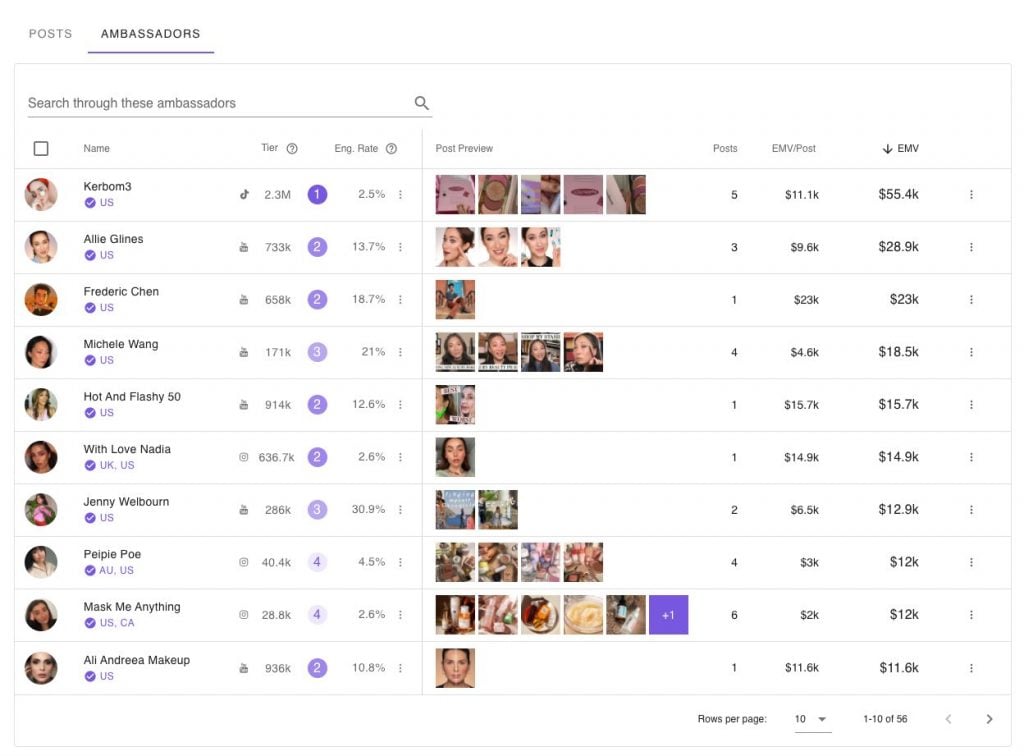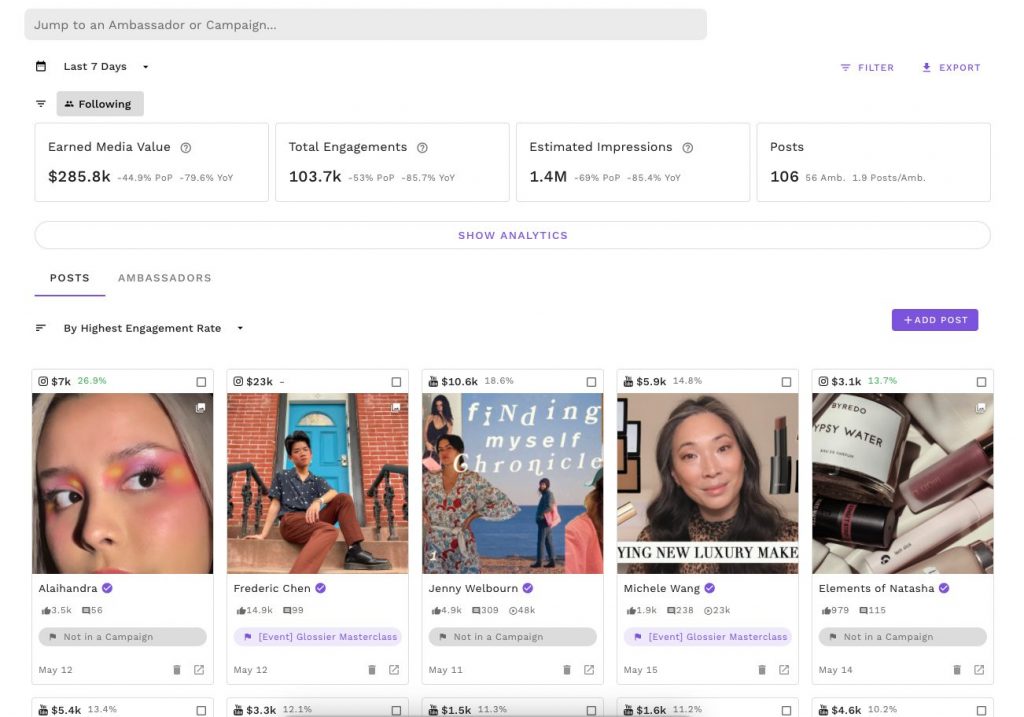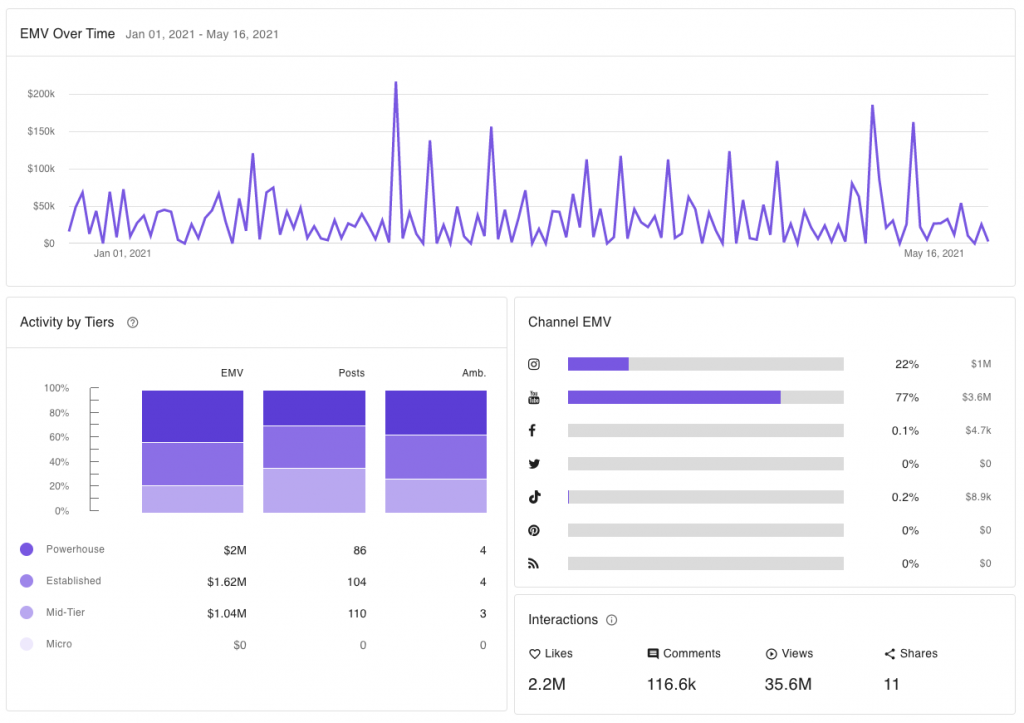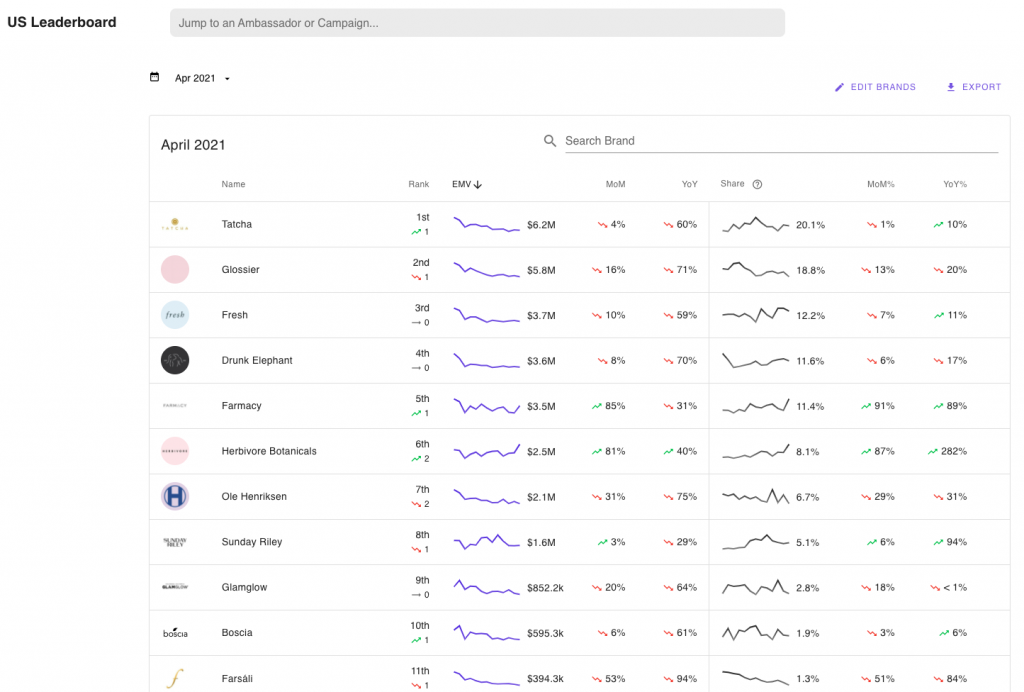
Influencer marketing is commonly thought of as a “social media thing,” and that is of course true. But if we trace back its history, the real birthplace of influencers is Instagram. Instagram took off on the basis of its strictly visual purpose, which made it the perfect place for good-looking people to look good in public, to people who were something other than friends or acquaintances. The inevitable partnerships between these attractive people and their favorite beauty and lifestyle brands represented the first attempts at influencer marketing. The success of these attempts launched an industry, and one of the earliest companies to form after that launch was Tribe Dynamics.
Tribe Dynamics launched in 2012, less than two years after Instagram did, and unlike many of its early (and later) competitors, it did so with focus. Influencer marketing might have universal appeal, but TD’s co-founders—Conor Begley and Jon Namnath—wisely put all their eggs into the Beauty, Fashion, and Lifestyle baskets. They also applied a similar focus to the platform they conceived. While other startups were busy creating marketplaces and/or end-to-end marketing platforms, TD kept its eye on what is arguably the most important part of influencer marketing: data. It’s a badge they wear proudly, describing themselves as the “Google Analytics” of influencer marketing strategies (Google is a web company, you may have heard of them).
What they mean by this is that Tribe Dynamics aims to take a holistic approach to analyzing and measuring the influence landscape. Note that I said “influence landscape” and not “influencer marketing landscape.” This is because TD looks beyond just the influencers a brand may work with factoring in organic mentions by any social account. They were the first to use the metric of Earned Media Value for social media—they claim to have created it in 2014, in fact. Earned media itself was not a new marketing concept, but Tribe Dynamics’ EMV algorithm was. To measure and calculate the value of earned media is to understand the impact of social posts. As you no doubt know, EMV is pretty much the standard metric for understanding the return on ad spend. This shows a keen understanding of the industry they chose to play in, and a further look into the software itself bears this conclusion out.
It’s no accident that Tribe Dynamics attracts some of the most recognizable names: it seems as though the company has written some of the rules on what makes for good analysis and business intelligence for the influencer marketing industry. And because the platform is purpose-built for these goals, it often makes it the perfect complement to whatever other tools a brand might be using. Even if you’re already using an all-in-one product, or a marketplace, or a campaign management tool, Tribe Dynamics would likely fit into your marketing infrastructure just fine without disrupting anything. And it’s been fitting in just fine for the last 9 years.
Summary
Pricing
Access to the platform is sold in three different levels of subscription, and there are a few add-on products, as well. The public website doesn’t list pricing; there is a link to download the pricing guide, which you can only get by supplying contact information. This is obviously for lead generation, and it feels like it would be a jerk move to publicize it here and subvert their sales efforts.
I did look at the prices, though, and it’s safe to say that Tribe Dynamics isn’t for small companies or brands. If you’re handmaking small-batch skincare products from honey that you harvest from your own bees and selling at your local farmer’s market, this software isn’t for you. Established name brands, up-and-comers making a name for themselves, and the agencies that represent these kinds of brands make up the target market for the platform, and they can choose one of these three packages:
- Micro — Community/relationship management and tracking for up to 750 influencers, content tracking, competitive monitoring of 1 brand, access to Tribe research and industry reports. Includes implementation and training, in-app support, as-needed client partner
- Established — Same as above, except: management/tracking of up to 2,500 influencer, competitive monitoring of up to 5 brands, and a proactive client partner
- Powerhouse — 5,000 influencers, competitive monitoring for up 10 brands
These plans can be further customised to include any of these add-ons:
- Additional Competitive Reporting can be purchased a la carte if you need to go beyond what your plan allows
- Additional Influencer Tracking, sold in blocks of 1,000
- Ephemeral Content Tracking, which is a lovely way of saying you can track Instagram Stories, too.
- Tik Tok Content Tracking, which is a very clear way of saying you can track Tik Tok content
- Industry Insight Reports, delivered quarterly
- Additional and Customised Data
- Addtional Influencer Search (included with Powerhouse)
The Details
While the Tribe Dynamics can be used for some measure of discovery, it’s not really the focus here. So, where most platforms shuttle you directly to their search functions, viewing discovery as the first step in the process, TD operates under the assumption that you’ve brought your own influencers to be tracked and monitored. The prevailing thought here is that retention is ultimately far more important than discovery—having a fairly static community of influencers demonstrates a kind of loyalty on both sides of the equation, which makes for a more compelling and authentic message. Often, brands get hung up on expanding their own reach and are constantly on the lookout for new influencers who can bring more customers to the fold, but that can fracture relationships with those who they’re already working with. If greater reach is a dragon you want to chase, then let your influencers do it for you: they’re already in the business of growing their following. Just keep them happy and they’ll handle the growth for you.
So, instead of discovery, Tribe Dynamics brings you to what’s called their “Ambassadors” panel, essentially a high level dashboard of all the social accounts you’re tracking. It’s not just a language choice that it’s called that instead of “Infuencers.” That’s because the platform is tracking anyone (or any entity, even brands) who follow, and listens for mentions and other search terms you define. For each post that matches the criteria, Tribe Dynamics is calculating the earned media value over the last quarter, and the one before that. Right off the bat, with just the most passing of glances, you’re given the breakdown of the total earned media value of all these ambassador mentions, represented in four “buckets.”
- Retained — This is how many people who mentioned you in the previous quarter also mentioned you in the present one.
- New — These are mentions by people this quarter who weren’t talking about you previously.
- Lost — You’ve likely figured out these are the people who mentioned you previously, but not at all in the current quarter.
- Potential — These are people who’ve mentioned you at some point in the past, but not in the last six months.
For each of these buckets, you’re given the total EMV for the previous and current quarter, meaning that within just a few minutes of logging in you get a remarkably specific account of your social performance, measured in actual dollars. Below these summary buckets is the full list of ambassadors who were included in the analysis. The number of them can be quite a lot—in the thousands, at least, if you’re the kind of brand that falls into Tribe Dynamics’ target—and so there are more than a dozen filters for you to narrow the list as you deep dive into what or who has been affecting your performance. From that list you can see more individualised metrics, like their reach, engagement, total posts, and EMV (avergaeg per post, and the total).
A quick aside on engagement: Tribe Dynamics expresses engagement rate as a percentage, much like you’d see anywhere else. But they calculate that percentage differently, using a method they describe as “the right way to do it.” Instead of just totaling up the likes and comments and then dividing that number by the reach, TD’s engagement rate expresses the rate as a comparison to other influencers of the same size. So, if you see a rate of, say, 1%, that means this particular ambassador is doing 1% better than the average. A negative number means—you guessed it— worse than the average. Whether this is right or wrong isn’t for me to say—I’m a writer and not a data scientist. But I can say, as a writer, that context is extremely important to understanding, and Tribe Dynamics is giving great context with this method.
From this list of individuals you can click through to each person's Tribe Dynamics profile. I say “profile,” for lack of a better term, but don’t confuse that with their social profiles. This is more like a CRM profile, where you get to see the business end of their activity. There’s a breakdown of all their social profiles, along with high level metrics for each (follower count, engagement, etc.), but then there’s also a section for tags as a way to categorise them. Some of the tags are automatically assigned by the platform—the “Tribe Verified” tag, for example, lets you know TD’s team has verified their contact information—but users can also custom create their own. The profile also lets you know things like their top brand mentions, campaigns they’ve worked on, and there are spaces for internal notes that users may want to create about them.
This profile page is where you can start getting into the details of their content, as well. Social posts and their attendant metrics are ingested into the platform and viewable right from the influencer’s profile page. There’s also a full accounting of their EMV and engagements—in total, but also broken down by channel and individually—and compared to previous performance so you can get an understanding of how well (or not) an influencer is working for you. This kind of analysis continues in Brand Buzz, which amounts to looking at the same data you see for each individual, aggregated for the brand as a whole.
The Campaigns section is essentially an even further refinement of all that data. Here, you can have it track your campaign specific hashtags over a specified period of time to measure performance and EMV. And finally, four items down in the navigation menu, is Tribe Dynamics’ approach to Discovery. Not the most important thing, but if you need more people you can look here: it’s all accounts that are talking about your brand and you aren’t working with yet. Distinct from Discover is the Search function, where brands can discover and recruit people talking about competitive brands.
Finally, Tribe Dynamics adds a nice heaping dose of context (again) to the proceedings with its Leaderboards module. This is where you can see how your brand stacks up next to the competition, pitting your EMV and other relevant metrics against one another.
Conclusion
It turns out to be impossible to verify whether or not Tribe Dynamics really did create Earned Media Value for influencer marketing purposes. Nobody was using it so nobody was talking about it, which also makes it impossible to debunk the claim. Equally important: it literally does not matter. Even if it weren’t TD’s invention, they were among the first to make use of a new idea that ended up becoming a standard for their industry. And, seven years later, they’re continuing to refine the metric, and how it can be refined and applied for better business intelligence.
As analytics-only tools have started becoming more popular, it’s been interesting to see the different ways developers are coming at data for analysis. Time will tell on these newer perspectives, but it’s already spoken on EMV. And Tribe Dynamics has been leading that conversation for a long time, for good reason.
Tribe Dynamics
-
Features
-
Ease of Use
-
Reporting

